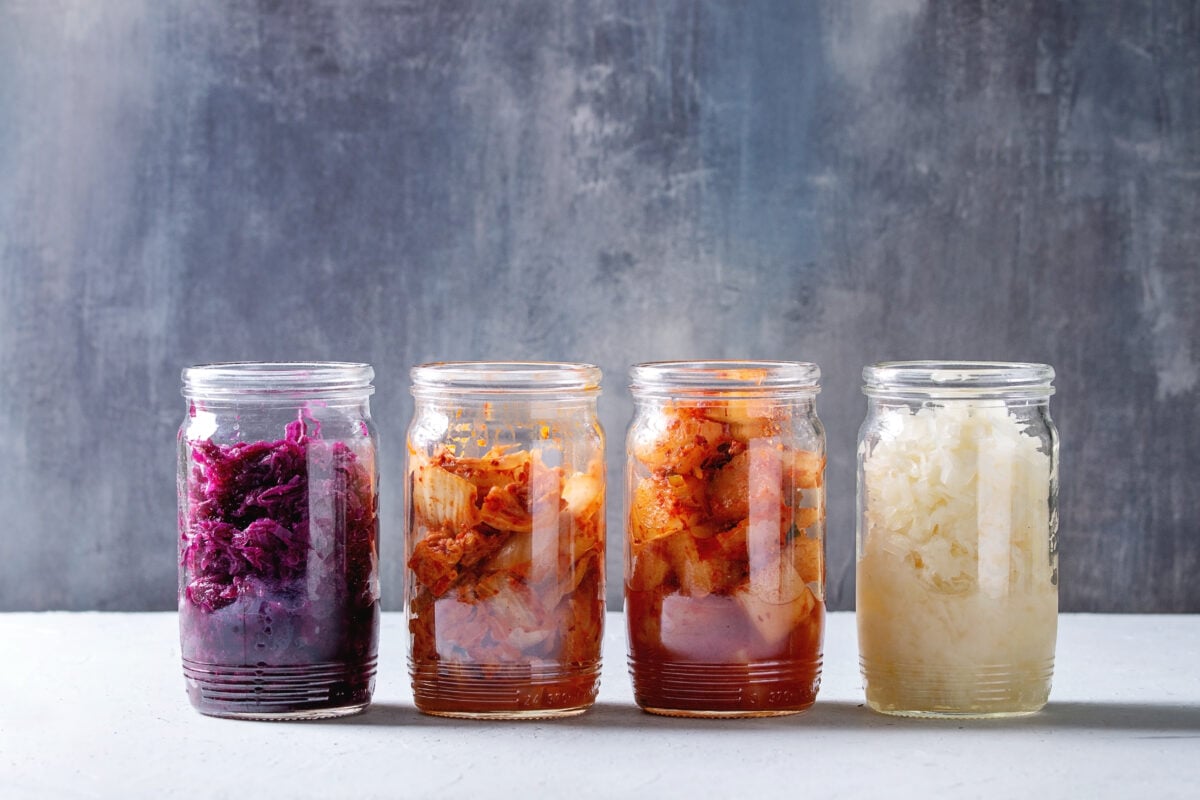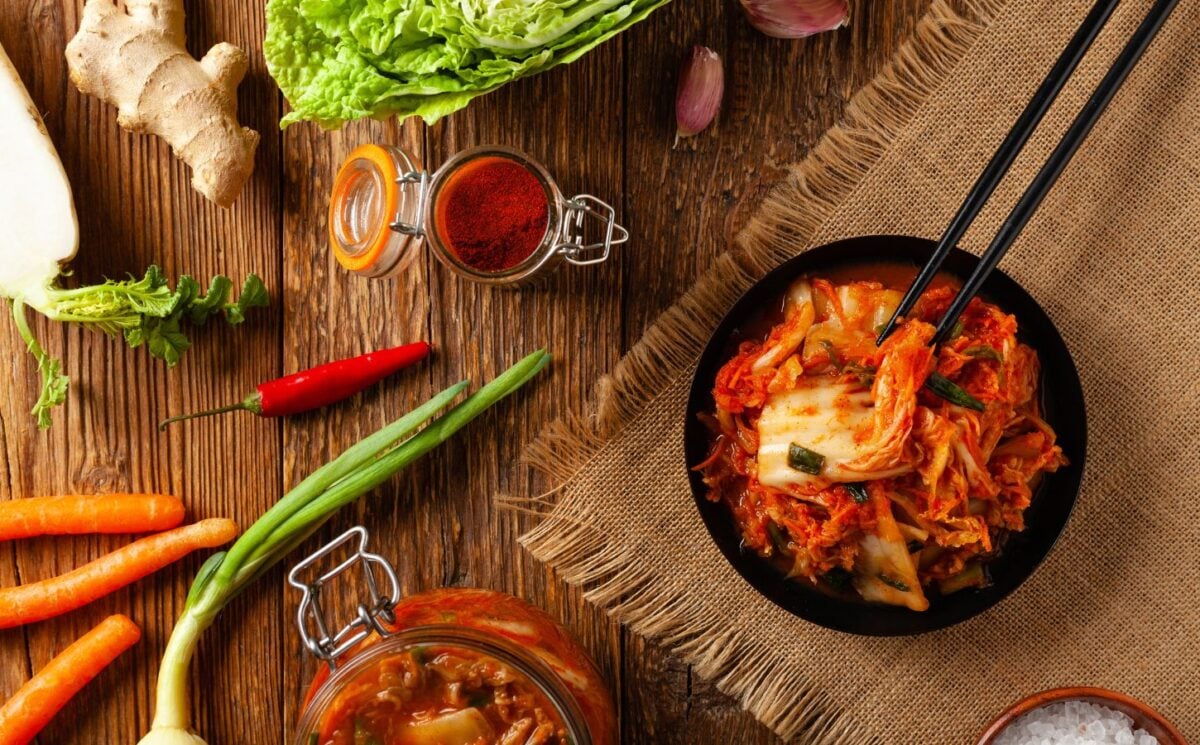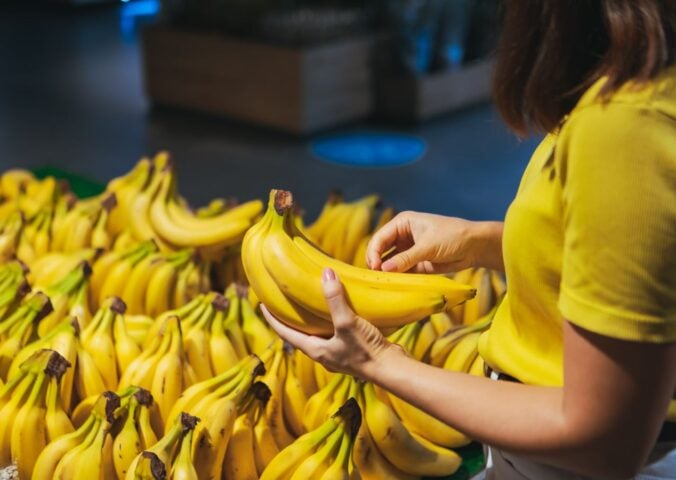Kimchi is undoubtedly having a moment right now. While the traditional Korean dish of fermented vegetables is at least 4,000 years old, it is receiving newfound appreciation worldwide for its nutrient density, numerous health benefits, and unique flavor.
A new finding by sports nutrition brand Bulk revealed a 154 percent increase in Google searches for kimchi compared to the five-year average. In fact, between January 28 and February 3 of this year alone, searches related to kimchi increased by over 50 percent.
Here’s everything you need to know about Kimchi‘s origins, nutritional profile, where to get it, whether it’s vegan, and perhaps most importantly: what does kimchi actually taste like?
What does kimchi taste like, and why?

Kimchi is prepared by salting and fermenting vegetables. The resulting taste is tangy, sour, salty, and frequently spicy, with the flavors’ intensity and specific notes varying greatly from recipe to recipe. (And with over 4,000 years of culinary heritage, kimchi can be prepared in countless ways and with endless variations on seasoning and base ingredients.)
One common note found amongst almost all fermented foods – including kimchi – is that of umami: a loanword from Japanese that translates to “pleasant savory taste.” The process of fermentation itself along with the choice of ingredients together inform this umami note.
“Kimchi is traditionally made from a mixture of green cabbage and Korean radishes fermented with a variety of seasonings such as garlic, chili, and ginger,” Emily McKee, a dietitian at the Vegan Society, tells Plant Based News. “Although each recipe is unique and there are hundreds of varieties.”
Early recipes date back to at least the 13th century, at which point kimchi was made using a blend of vegetables and pickles, and preserved using either salt or an alcohol-salt mixture.
Red pepper (specifically Korean gochugaru with its uniquely smoky heat) was added to the ingredients list around the 17th century, and other historical iterations have included turnips, carrots, leeks, spring onions, cucumbers, mustard leaves, mushrooms, eggplants, seaweed, spinach, pumpkin, burdock, celery, and many, many other vegetables.
Where does kimchi come from?
A staple food in Korea, kimchi is still frequently eaten as a “banchan,” or side dish, with every meal. As with pickling, drying, and salting, food fermentation was initially adopted as a way of preserving nutrient-dense fresh produce and vegetables for the cold winter months.
Gimjang, the ritual of preparing and making kimchi, is celebrated as an affirmation of Korean culture and a valued community activity and has been included on the UNESCO Intangible Cultural Heritage list since 2013 (South Korean style) and 2015 (North Korean style).
Traditionally, Gimjang takes place during the 10th month of the year and involves the preparation of enough kimchi for the entire winter. Gimjang’s focus on seasonal produce and natural fermentation also serves as a reminder for humans to live in harmony with nature.
Put simply, fermentation is the process by which microorganisms such as bacteria break down starch and sugars, transforming them into acids – natural preservatives and the source of fermented foods’ distinct, tangy flavor, as in kimchi.
Kimchi is typically fermented solely using the wild cultures that are naturally present in the core ingredients – cabbage and radish – rather than using an additional “starter,” as with sourdough bread, yogurts, and kefir.
Because kimchi is made in this way (also known as “spontaneous fermentation”) the number of live microorganisms present on the base ingredients at the beginning of the process is unknown and highly variable each time, making the final product variable too.
Is kimchi vegan?
While the microorganisms that aid fermentation are described as “live,” foods such as kimchi are suitable for vegans – providing no animal-derived ingredients are added alongside the seasonings and vegetables. One such ingredient to watch out for in kimchi is seafood.
Jeotgal, or salt-preserved seafood, is sometimes included in traditional varieties of kimchi. Jeotgal can refer to shrimps, oysters, clams, fish, roe, anchovies, or even octopus, prepared as either solid pieces or a clear broth. Perhaps most often, if kimchi does contain jeotgal, it will be as a sauce, stock, or paste, included in order to deepen the natural umami flavors.
While less commonplace, some varieties of kimchi may also include beef stock, which is also added for depth of flavor. (Perhaps unsurprisingly, vegan kimchi is generally more shelf stable than varieties with meat and fish in, and can last much longer once open, too.)
Many mainstream Korean brands of kimchi – again, typically those made to a traditional recipe – are not vegan because they contain anchovy paste or seafood broth. However, there are plenty of producers who prepare kimchi for a vegan recipe, including Yutaka in the UK or Nasoya, Wildbrine, and Seoul kimchi in the US. Visit your local Asian supermarket to check.
Kimchi is also simple to make at home and to customize with your preferred ingredients and flavors. You can check out a recipe from Joanne Lee Molinaro, aka the Korean Vegan, right here. You could also adapt any number of traditional Korean recipes by simply skipping the fish sauce in favor of some extra salt, or swapping it for a vegan fish sauce like Thai Taste or Sozye’s Nish product.
Health benefits of kimchi

Part of kimchi’s success as a preserved food is how nutrient-dense it is. Once fermented, kimchi is high in fiber, polyphenols (also known as antioxidants), and vitamins A, B, C, and K. (It also contains iron, calcium, copper, and potassium, albeit in slightly smaller amounts.)
“The popularity of kimchi at the moment, however, is largely due to the fact it provides us with both prebiotics, which are nutrients that provide food for our gut bacteria, and with probiotics, aka live microbes which survive to reach our lower intestine,” explains McKee. “It is estimated that kimchi can contain up to 25 different species of live bacteria.”
There are approximately 39 trillion cells in the human body’s microbiome. (That’s about 9 trillion more than the total number of human cells.) These bacteria within our bodies help to process foods, make nutrients available, neutralize toxins, and support the immune system.
According to McKee, each person’s gut microbiome is made up of a unique community of thousands of bacteria species, each with a different function for health. The bacteria in our intestines, for example, help to regulate bowel motility, protect from infectious diseases, and can even ease bloating for some folks.
These bacteria have less common functions, too, including metabolizing fiber and other nutrients in the colon. McKee says “This allows them to produce substances that regulate […] immunity, our metabolism, body weight, and even our mental health. Science suggests that the more diverse and extensive your microbiome the better.”
Studies have linked kimchi consumption to various other health benefits in addition to those listed above, including the reduction of inflammation, supporting good heart health, reduced blood pressure, and reduced blood sugar levels. However, McKee notes that currently “there is not enough evidence to recommend kimchi for specific health conditions.”
Kimchi vs other fermented foods
Kimchi is not the only fermented food to be enjoying widespread popularity, with homemade sourdough and kombucha, in particular, making a huge impact on health-conscious consumers (and lockdown bakers) since 2020. However, both of these foods require a starter, and as a result, their microbial content and its associated benefits may vary.
Tempeh, a fermented loaf made of cooked soybeans, is spectacularly nutritious, and combines its probiotic properties with plenty of protein, isoflavones, and phytoestrogens, each with their own respective health benefits. Sauerkraut is perhaps the most comparable fermented food to kimchi due to its cabbage base but is slightly less nutritionally dense.
“Sauerkraut is thought to contain lower levels of probiotics, but both foods contain much higher levels than commercial probiotic products,” says McKee. She also adds that sauerkraut does contain “similarly high levels of vitamins B, C and K alongside pre-and probiotics,” as well as high levels of polyphenols and fiber.
Thanks to the nutritiousness of its base ingredient, cabbage, and the unique spontaneous fermentation process, kimchi is perhaps the most nutrient-dense fermented food of its kind.
But before you introduce kimchi into your diet – perhaps as part of this delicious Korean pancake recipe – there are some considerations to be taken into account. McKee explains that while kimchi is full of healthy bacteria, it is still bacteria, and as a result, the fermented dish needs to be purchased or made responsibly and stored correctly.
Folks who are pregnant or who have compromised immune systems should be particularly conscious about consuming any fermented food products, and those with high blood pressure should also note the high sodium content of foods like kimchi and sauerkraut.
Fortunately, you don’t need to eat kimchi constantly to benefit. In fact, studies indicate that eating kimchi just once a day for two weeks can positively impact the diversity of the average person’s gut microbiome, decreasing their blood sugar, total cholesterol, and LDL (“bad” cholesterol), all of which contribute to overall heart health.






